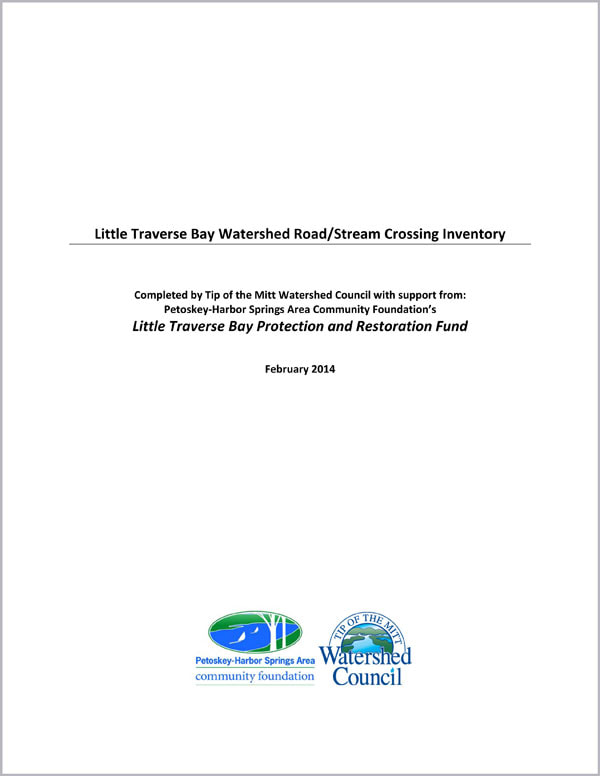Little Traverse Bay Watershed Road/Stream Crossing Inventory
|
In 2012, a road/stream crossing (RSX) inventory for the Bear River Watershed, a subwatershed of Little Traverse Bay, was conducted by the Tip of the Mitt Watershed Council (TOMWC) as an update to a 2000 inventory conducted by Conservation Resource Alliance (CRA) and TOMWC. During the 2012 inventory, TOMWC determined there were additional stream crossings within the watershed that were not included in the 2000 inventory. In 2013, in an effort to both collect information about the previously missed sites and to update the inventory for the entire Little Traverse Bay Watershed, TOMWC pursued funding through the Petoskey-Harbor Springs Area Community Foundation to complete the Little Traverse Bay Road/Stream Crossing (RSX) Inventory. The inventory was the first watershed-wide update to the previous LTBW RSX inventory conducted in 2002. In total, the 2012-2013 inventories included 121 RSX sites.
Why: RSXs that are improperly designed or installed, structurally failing, or no longer accommodate current stream conditions affect stream health. They can affect stream hydrology, prevent fish and other aquatic organisms from reaching up-and downstream reaches, increase water temperatures, and are sources of nutrients, sediments, bacteria, heavy metals, and other nonpoint source pollutants. In Northern Michigan, sediments pose the greatest threat to rivers and streams. Sedimentation can adversely impact fish and aquatic organisms by degrading their habitat and reducing water quality. Watershed Management: RSX inventories serve as a useful watershed management tool. They help to identify sediment pollution entering surface waters from poorly designed, maintained or aging infrastructure; fish passage barriers due to perched culverts or velocity barriers; and altered stream hydrology due to inadequately designed or installed crossings. Therefore, identifying failing or deficient RSXs is critical to resource management. Regular inventorying of RSXs allows road commissions and resource managers to note change in stream and structure conditions over time. Furthermore, by applying the Great Lakes Road/Stream Crossing protocol, RSXs can be ranked as minor, moderate, or severe as a means of prioritizing them for improvements or replacement. The Little Traverse Bay Watershed is fortunate to have an active watershed advisory committee to oversee implementation of the Michigan Department of Environmental Quality and Environmental Protection Agency-approved Little Traverse Bay Watershed Protection Plan (2007). |
Click report cover to view online
or to download the document. |
|
To learn more about the individual sites in the inventory, use our interactive Google map. Each point on the map offers information about the specific site and most include a photo of the location. A full report is available below.
Red Points = Severe Yellow Points = Moderate Green Points = Minor |
|




